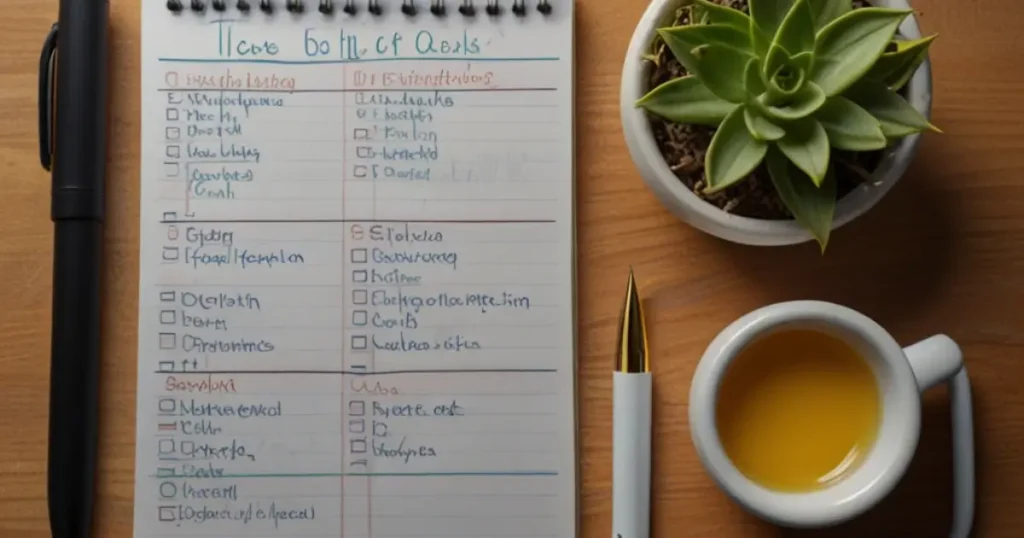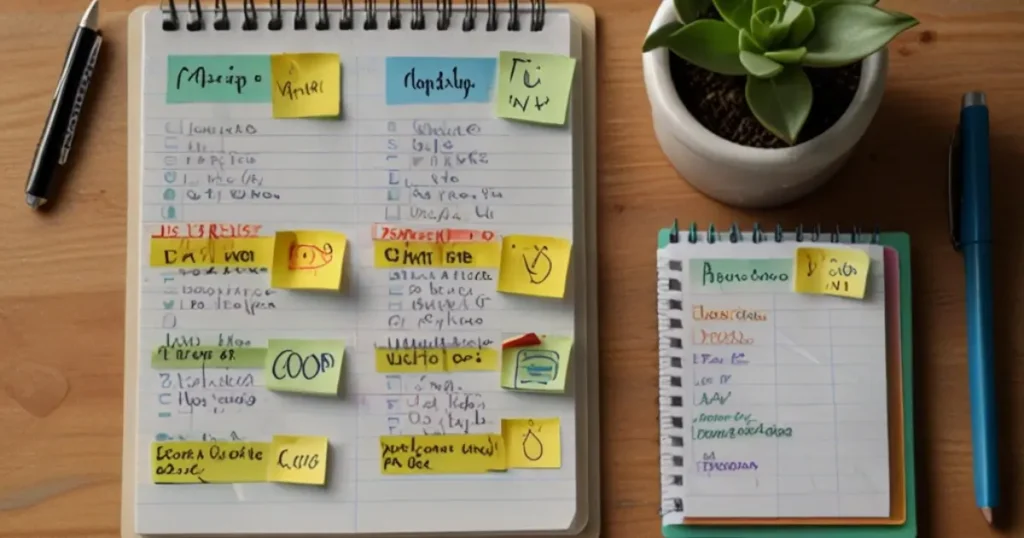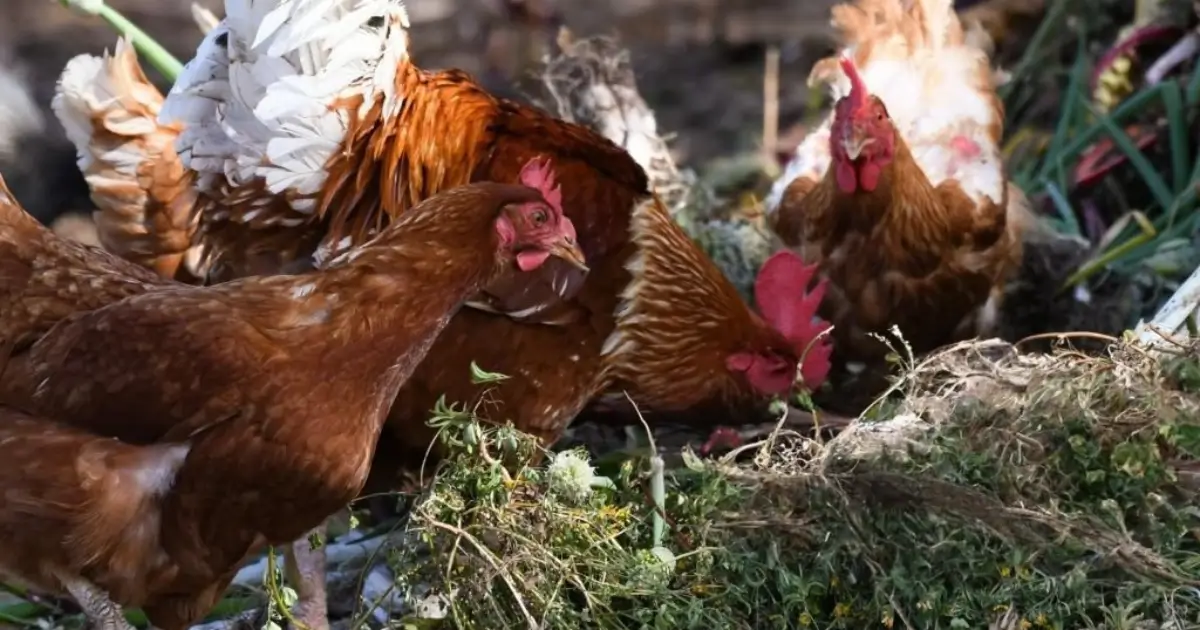Table of Contents
Have you ever found yourself savoring a dish so delightful that you couldn’t wait to recreate it? Yet, when it came time to jot it down, your notes turned into an indecipherable swirl of chicken scratch? Trust me, I’ve been there too. As a professional chef and culinary enthusiast, I know how essential it is to keep recipes clear, organized, and ready to use at a moment’s notice.
Whether you’re scribbling down your grandma’s secret sauce recipe or brainstorming a creative twist on a classic dish, having structured and legible notes makes all the difference. In this recipe, I’ll guide you step-by-step, ensuring that each part is not only easy to follow but also a pleasure to revisit.
So, let’s embark on this delicious journey together! With my tips and expertise, you’ll not only create an incredible dish but also perfect the art of recording it beautifully. Trust me, Sophie LeClair, to make this process as seamless and enjoyable as possible.
Key Benefits of Perfect Notes-Chicken Scratch
When it comes to mastering the art of note-taking, the benefits go far beyond just organization. Whether you’re jotting down a family recipe, sketching out your weekly meal plan, or brainstorming your next culinary masterpiece, clear and structured notes can make all the difference. Here’s why they matter:
Why Perfect Notes Are Essential

- Clarity and Confidence: Clear notes mean you can follow recipes effortlessly, without second-guessing measurements or missing key steps.
- Time-Saving: No more flipping through messy scribbles organized notes allow you to cook with precision and efficiency.
- Improved Creativity: A well-documented recipe sparks innovation, inspiring you to tweak ingredients or try new techniques.
- Stress-Free Sharing: Whether teaching a friend or sharing on a blog, perfect notes make your recipes accessible to everyone.
Benefits at a Glance
| Key Benefit | Description |
| Clarity in Cooking | Easy-to-follow recipes ensure consistent results. |
| Enhanced Organization | Well-structured notes reduce clutter and confusion. |
| Creativity Boost | Documented tweaks inspire new ideas and variations. |
| Easy Sharing | Share recipes seamlessly with others, no edits needed. |
How to Start Creating Perfect Notes-Chicken Scratch
- Use the Right Tools: Invest in good-quality pens and durable notebooks to ensure your notes stand the test of time.
- Keep It Simple: Avoid overloading your notes with unnecessary details. Focus on the essentials ingredients, quantities, and step-by-step instructions.
- Visualize Your Notes: Incorporate bullet points, numbered lists, or diagrams to break up dense text and improve readability.
- Stay Consistent: Use the same format for all your recipes, so you always know where to find what you need.
By following these tips, you’ll not only enhance your cooking experience but also preserve your recipes for years to come. Let’s move on to the ingredients to see how these ideas come to life.
Ingredients for Perfect Notes-Chicken Scratch

Every great recipe starts with the right ingredients, and the same goes for crafting clear, organized notes. Here’s what you’ll need to set yourself up for success:
Essential Tools for Clear Note-Taking
| Tool | Purpose |
| Quality Pens | Choose smooth-writing pens that are easy on the hand for extended use. |
| Notebooks or Journals | Opt for durable, lined notebooks to keep your notes neat and long-lasting. |
| Highlighters | Use different colors to emphasize key steps or ingredients. |
| Sticky Notes | Perfect for jotting down quick ideas or reminders. |
| Ergonomic Support | Consider wrist pads or angled desks for comfortable writing. |
Additional Ingredients for Better Notes
- Digital Tools: If you prefer typing, apps like Evernote or Notion offer great ways to organize recipes.
- Index Cards: For quick reference, especially for frequently used recipes.
- Tab Dividers: Keep sections like appetizers, mains, and desserts easily accessible.
Pro Tips for Choosing Your Ingredients
- Test Your Pens and Paper: Smooth-writing pens and non-bleeding paper create a pleasant writing experience.
- Go Eco-Friendly: Choose recycled or sustainably sourced notebooks to minimize environmental impact.
- Stay Portable: A compact notebook or digital tool ensures you can jot down ideas anywhere, even mid-cooking.
- Personalize Your Setup: Add flair to your notes with colorful pens, doodles, or custom dividers to keep things fun and inspiring.
Once you’ve gathered your tools, you’re ready to dive into the next step structuring your notes for maximum clarity and usability. Let’s get started.
Instructions for Creating Perfect Notes

Now that you’ve gathered your tools, it’s time to bring structure and clarity to your note-taking process. These step-by-step instructions will guide you to create notes that are clear, practical, and a joy to use.
Step-by-Step Instructions
- Prepare Your Workspace
- Ensure your area is clean, well-lit, and free from distractions.
- Keep all your note-taking tools pens, notebooks, highlighters, or devices within reach.
- Start with a Title (Chicken Scratch)
- Clearly label your notes with the recipe name or topic at the top.
- Add the date for easy reference later.
- List Ingredients and Quantities
- Write ingredients in the order they’ll be used in the recipe.
- Use a table for clarity:
| Ingredient | Quantity |
| All-Purpose Flour | 2 cups |
| Unsalted Butter | 1/2 cup |
| Granulated Sugar | 1 cup |
| Eggs | 2 large |
Outline the Steps- Number each step to keep the process clear and organized.
- Use short, actionable sentences:
- Preheat the oven to 350°F (175°C).
- Cream butter and sugar until light and fluffy.
- Gradually add eggs and mix well.
- Sift flour and fold gently into the mixture.
- Add Notes and Observations
- Include any variations or personal adjustments you’ve made.
- Highlight critical details, such as cooking times or substitutions, with bullet points or underlines.
- Review and Simplify
- Reread your notes to ensure clarity and accuracy.
- Remove any unnecessary details or redundant information.
Tips for Refining Your Notes
- Be Consistent: Use the same structure for every recipe to create a seamless collection.
- Use Visual Cues: Add icons or symbols to emphasize key points, like cooking times or essential ingredients.
- Leave Space: Reserve blank space for future edits or additional notes.
With these instructions, you’ll find note-taking becomes not just a task but an enjoyable part of your culinary journey. Ready to move on to pro tips and variations? Let’s take your notes to the next level.
Pro Tips and Variations for Perfect Notes
Taking your notes from functional to fantastic doesn’t require a lot of effort, just a few thoughtful tweaks and creative ideas. Here are some pro tips and variations to make your recipe notes truly stand out:
Pro Tips for Enhanced Notes
- Create Sections for Quick Reference
- Divide your notes into ingredients, instructions, and tips for easy navigation.
- Use bold headings or colored tabs to identify each section at a glance.
- Incorporate Visual Elements
- Add small drawings or diagrams to clarify tricky steps.
- Use arrows to show relationships between steps, especially for complex recipes.
- Emphasize Key Details
- Highlight cooking times, temperatures, or any unusual techniques.
- Use asterisks (*) or bold text for emphasis, e.g., Bake for exactly 25 minutes.
- Use a Consistent Format
- Stick to the same format for all your notes so they’re easier to read and reference later.
- Keep Notes Editable
- Leave space for updates, like new ingredient measurements or alternate methods.
Variations to Personalize Your Notes
| Variation | How to Implement |
| Color-Coded Notes | Assign colors to different categories: red for instructions, green for tips. |
| Recipe Journals | Use a dedicated journal with pre-designed templates for consistency. |
| Digital Enhancements | Add links, images, or videos to your notes if using a digital platform. |
| Flavor Profiles | Include a small section for taste descriptions (e.g., sweet, savory). |
| Cultural Notes | Add historical or cultural context to the recipe to make it memorable. |
Ideas for Elevating Your Note-Taking
- Seasonal Notes: Record which ingredients are freshest during certain times of the year.
- Substitution Suggestions: Note alternatives for hard-to-find or dietary-specific ingredients.
- Ratings and Reviews: Include a space to rate the recipe and jot down feedback after trying it.
By applying these pro tips and variations, your notes will not only serve as a practical guide but also as a creative and personal record of your culinary adventures. Next, let’s explore some serving suggestions to complete the picture.
Serving Suggestions for Perfect Notes
Now that you’ve created your perfect notes, it’s time to think about how to share them with the world or simply enjoy them yourself. Here are some serving suggestions to make the most of your newly organized recipe notes, whether you’re using them for personal reference or sharing them with others.
How to Share Your Perfect Notes
- Handwritten Notes: For a personal touch, share your notes with friends or family in a beautifully handwritten journal. This is especially meaningful when passing down family recipes or creating a gift.
- Printed Recipes: If you’re sharing your notes digitally, consider printing them in a clean, easy-to-read format. A small binder with plastic sleeves can protect and organize your collection for easy flipping.
- Digital Sharing: Use cloud storage (like Google Drive or Dropbox) to share your notes with others, or upload them to your blog or recipe platform. Consider including photographs of the process for extra clarity.
Ways to Enjoy Your Notes
- Cook from Your Notes
- The whole point of perfect notes is to make cooking easier and more enjoyable. Use them as your guide while cooking your favorite recipes.
- Consider creating a recipe of the week and making a new meal based on your organized notes.
- Create a Recipe Box
- Whether physical or digital, organizing your notes into a recipe box is an excellent way to keep your culinary creations accessible.
- Add seasonal tags, like “Winter” or “Quick Weeknight Meals,” to make them even easier to find.
- Cookbook Creation
- Use your organized notes as the foundation for a personal cookbook. Print them, add beautiful photos, and bind them into a professional-style cookbook to showcase your culinary repertoire.
Pairing Notes with Culinary Inspiration
- Incorporate Quotes: Add inspiring cooking quotes or fun anecdotes to your notes to make them even more engaging.
- Keep a Food Journal: Track your cooking journey with notes on what worked well, what you’d change, and new ideas you want to try.
- Invite Family: Share the notes with family and have them cook together, making the process more fun and collaborative.
With these serving suggestions, your recipe notes will not only be practical, but they’ll also become a treasured part of your culinary legacy. Whether you’re sharing them with others, cooking solo, or using them for inspiration, these notes will help you stay organized and inspired.
Conclusion: Final Thoughts on Creating Perfect Notes
Congratulations. You’ve learned how to take your notes to the next level and transform them into a tool that’s not only functional but inspiring. Whether you’re using them for your own reference or sharing them with others, these tips and techniques will help you stay organized and confident in your cooking journey.
Key Takeaways
- Clarity is Key: The most important part of note-taking is making sure your instructions are clear and easy to follow.
- Creativity Makes it Fun: Don’t be afraid to get creative—whether it’s adding personal flair, using color, or including cultural tidbits, make your notes your own!
- Consistency is Essential: Stick to a consistent format and structure, so your notes are always easy to navigate and reference.
Final Words from Sophie LeClair
As a world-class chef, I’ve found that good notes can make all the difference in a kitchen. Not only do they guide you through the recipe, but they also enhance the experience by keeping you organized and motivated. Cooking should be enjoyable, and your notes can reflect that joy by being easy to use, visually appealing, and always ready to inspire.
I hope these tips help you create the perfect notes for any recipe. Whether you’re cooking for yourself or sharing your culinary expertise, these notes will be your secret ingredient to success.
FAQs: Answering Your Common Questions on Perfect Notes
As you venture into perfecting your recipe notes, you may have some questions about the process. Here are answers to some of the most frequently asked questions that will help you along the way.
1. What’s the best way to organize my recipe notes?
The key is to create a system that works for you. Here are some options:
- Use a digital platform like Evernote or Google Docs to keep your notes accessible and editable on the go.
- Physical recipe box or binder works well if you prefer a hands-on approach. Consider organizing by categories like “Baking,” “Meals,” or “Quick Recipes.”
- Color-coding or tabbing can make it easy to navigate through your sections.
2. Can I add personal notes or modifications to the recipes?
Absolutely. Your personal touch is what makes your notes unique and valuable. Add notes like:
- Substitutions for hard-to-find ingredients.
- Modifications based on dietary preferences (e.g., gluten-free, vegan).
- Tips on adjusting the recipe for different serving sizes.
These personal touches will make your notes even more practical.
3. How do I ensure my notes are clear and easy to follow?
Here are a few simple ways to enhance clarity:
- Short sentences and simple language: Avoid complex terms. Keep instructions clear and direct.
- Step-by-step structure: Break instructions down into small, manageable steps for easier reference.
- Use bullet points or numbered lists for key instructions or ingredients. This makes it visually easier to follow.
4. How do I keep my recipe notes organized if I have a lot of them?
If you have a growing collection of recipe notes, consider these strategies:
- Alphabetical or themed organization: Keep your notes categorized by type, such as “Appetizers,” “Main Courses,” “Desserts,” etc.
- Regular updates: Set aside time to review your notes every few months, adding or removing recipes as needed.
5. Can I digitize my handwritten notes for easy access?
Yes! You can scan your handwritten notes using a scanner or your phone. Apps like Adobe Scan or CamScanner will allow you to convert your handwritten recipes into editable text. You can then store them in cloud services like Google Drive for easy access on any device.
6. How can I make my recipe notes more engaging and creative?
There are many fun ways to make your notes stand out:
- Add photos: Include photos of the recipe stages or finished dish to enhance your notes.
- Write personal anecdotes: Share stories about the recipe’s history or how it became a favorite in your household.
- Design and decorate: If you’re creating a physical recipe book, use decorative elements like borders or creative fonts to make your notes visually appealing.
7. What exactly is chicken scratch?
“Chicken scratch” is a term used to describe messy or illegible handwriting. It’s often used to refer to handwriting that looks chaotic or hard to read, resembling the way chickens might scratch at the ground.
8. What is a chicken scratch slang?
In slang, “chicken scratch” refers to anything that is poorly written, difficult to decipher, or looks messy. It’s commonly used to describe someone’s handwriting, especially if it’s hard to read.
9. What is chicken scratch handwriting?
Chicken scratch handwriting refers to writing that is sloppily done, often characterized by uneven strokes, irregular letter shapes, and a lack of legibility. It’s a playful way of saying that the writing is hard to read, much like how a chicken’s scratches on the ground look haphazard.
10. What causes chicken scratch skin?
“Chicken scratch skin” refers to small, raised red bumps on the skin, often resulting from scratching or irritation. It can occur after scratching an itch or from conditions like hives or bug bites. In some cases, it can also be associated with a type of rash that looks similar to the random, uneven marks that a chicken might leave when scratching.
I hope these answers help you make the most of your recipe notes. If you have any more questions or need additional guidance, feel free to reach out. Remember, cooking is all about creativity, and your notes should reflect that too. Happy cooking from Sophie LeClair.

